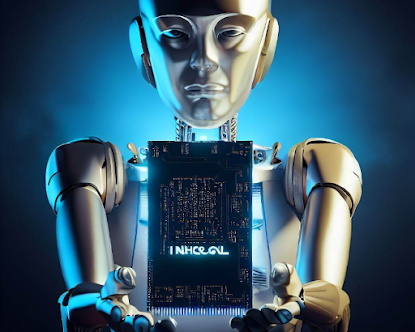Introduction
In recent times, the field of artificial intelligence (AI) has witnessed significant advancements, showcasing remarkable progress. Notably, groundbreaking models like GPT-4 and Meta Models have emerged, demonstrating impressive capabilities across diverse domains, including natural language processing and computer vision. However, these models primarily rely on general text and data for training, thus lacking the ability to comprehend the intricacies and nuances of scientific research. To address this crucial gap, Intel has unveiled new Model, an innovative generative AI model specifically designed for scientific endeavors. This cutting-edge model boasts an astounding parameter count of up to 1 trillion, aiming to bridge the gap between AI and scientific research.
The collaborative initiative known as Aurora genAI is a pioneering project undertaken by Intel, HPE, and Argonne National Laboratory. Its purpose is to develop an extensive collection of generative AI models tailored specifically for the scientific research community. This ambitious endeavor is centered around harnessing the immense computational capabilities of the anticipated Aurora supercomputer, poised to become the United States' first exascale system. With a remarkable configuration boasting over 60,000 Intel Max GPUs, this supercomputer promises unparalleled computational power.
The primary aim of the Aurora genAI project revolves around the training and evaluation of its AI models, utilizing a vast and diverse dataset. This dataset encompasses a wide range of content, including general text, code, scientific literature, and structured scientific data sourced from various fields such as biology, chemistry, materials science, physics, medicine, and other relevant disciplines.
What is Aurora genAI?
Aurora genAI is an innovative generative AI model that possesses the ability to generate text, code, data, and images based on a given input or query. This cutting-edge AI technology utilizes advanced algorithms to create new content that is coherent, relevant, and realistic. For instance, the generative AI model can succinctly summarize a research paper, generate precise code snippets tailored to specific tasks, synthesize data for simulation experiments, or even visualize intricate molecular structures through detailed diagrams.
Features of Aurora genAI
One of the key features of Aurora genAI is its massive size. The target size for the model is 1 trillion parameters, which is 5.7 times more than GPT-4’s 175 million parameters1. Parameters are numerical values that determine how an AI model processes inputs and outputs. Having more parameters means that the model can learn more complex patterns and relationships from data. However, training such a large model also requires more computational resources and data.
Another key feature of Aurora genAI is its focus on science. Unlike other generative AI models that are trained on general text and data, Aurora genAI will be trained on scientific text and data from various domains. This will enable the model to capture the domain-specific knowledge and terminology that are essential for scientific research. Moreover, the model will be designed to support various scientific applications, such as:
- Content and stable diffusion: generating text or images that are informative and engaging for different audiences
- Systems biology: identifying biological processes related to diseases and suggesting targets for drug design
- Cancer research: analyzing genomic data and predicting tumor behavior
- Climate science: modeling climate change scenarios and impacts
- Cosmology: simulating the evolution of the universe and detecting gravitational waves
- Polymer chemistry and materials science: designing new molecules and materials with desired properties.
How to Access and Use Aurora genAI?
Aurora genAI project is currently undergoing vigorous advancements. It is poised to become accessible to the public by the end of 2023 or early 2024. The team of dedicated experts spearheading this initiative seeks to unveil versions of the model that can be accessed through an online platform or downloaded locally. Although these public iterations will possess fewer parameters compared to the complete model, they will still offer exceptional generative capabilities of the utmost quality. To foster collaboration and gain valuable insights into the model's performance and user-friendliness, the project team plans to organize hackathons and workshops, actively involving the scientific community.
Furthermore, the visionary Aurora genAI will be an open-source solution, making it available for commercial use under the Apache 2.0 license. This liberal license empowers individuals to freely utilize, modify, or distribute the model while adhering to the license's conditions. However, it is crucial for users to remain cognizant of the ethical and societal implications associated with employing generative AI models. These considerations encompass potential biases, the dissemination of misinformation, instances of plagiarism, and concerns regarding privacy.
If you are interested in learning more about Aurora genAI and its applications, you can check out the source section at the end of this article. You can also follow the project’s updates and announcements on their website and social media channels.
Conclusion
Aurora genAI is an ambitious project that aims to create a trillion-parameter generative AI model for science. By leveraging the power of the Aurora supercomputer and training on a large corpus of scientific text and data, Aurora genAI hopes to revolutionize scientific research by providing novel insights, solutions, and discoveries across various domains. As a blogger expert, I think this project is very exciting and promising for the future of AI and science. I look forward to seeing how Aurora genAI will perform in real-world scenarios and what kind of impact it will have on society.
source
official websites:
https://www.intel.com/content/www/us/en/newsroom/news/intel-delivers-ai-accelerated-hpc-performance.html#gs.zyi35o
https://www.intel.com/content/www/us/en/high-performance-computing/supercomputing/exascale-computing.html?wapkw=Aurora
https://www.intel.com/content/www/us/en/high-performance-computing/supercomputing/aurora-video.html

No comments:
Post a Comment